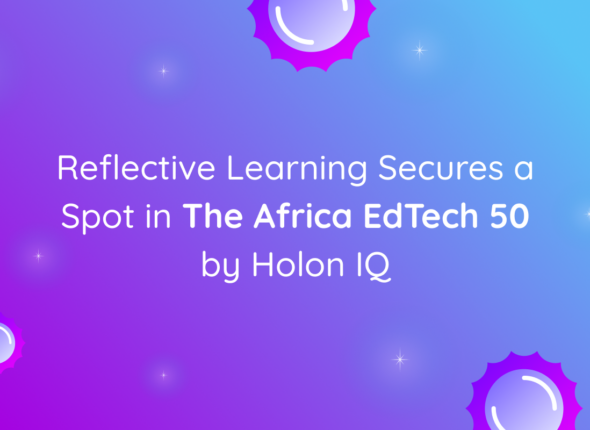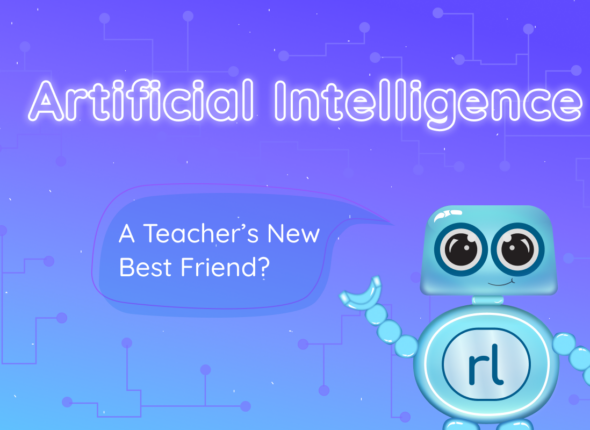In the heart of the classroom, where the chalkboard once stood as the centrepiece, a new revolution unfolds, reshaping the educational landscape with the quiet yet profound impact of Artificial Intelligence (AI). The shift, while significant, does not signify the end of an era but the dawn of a new chapter in teaching and learning. AI emerges not as a contender but rather as a companion for the traditional role of teachers. In this blog, we will explore how AI is revolutionising the education landscape, not by replacing the human connection that is essential to teaching, but by enhancing the ability for teachers to connect and inspire students.

The Role of A Teacher
At its core, teaching is inherently a human endeavour that extends beyond the mere transmission of knowledge. Teachers are not only educators but also mentors, guides and often, the crucial emotional support that students depend on. The classroom is a dynamic environment where human emotions, experiences and interactions intersect to create a unique educational journey for every student. Teachers adapt their lessons to the fluctuating needs of their students, recognise subtle cues that a student may be struggling and provide tailored support to help each individual overcome their unique challenges.
These aspects of teaching are deeply rooted in human empathy and understanding, qualities that AI has yet to, and may never fully replicate.
AI’s Buzz in Education: What Does this Mean?
As we embrace the digital age, AI has become a buzzword synonymous with both innovation and disruption, finding its way into numerous sections, including education. As technology advances, its reshaping education in profound ways, bringing with it a blend of opportunities and challenges.
AI’s integration into educational environments is multifaceted, offering tools that assist with everything from admin tasks to personalised learning. AI-powered platforms have the ability to grade assignments, manage schedules, and even analyse student engagement levels, freeing up valuable time for teachers to do what they do best: teaching.
It is becoming an indispensable resource for personalising education. By adapting to each student’s learning pace, needs and preferences, AI tools can offer tailor-made lessons and exercises. This not only helps in addressing the diverse needs of students in a mixed-ability classroom but also allows teachers to pinpoint and address specific areas where students may struggle.
AI in the Classroom: A Companion Not a Contender
However, contrary to the fear that AI might one day replace the human connection from teachers, the reality is far more cooperative and beneficial. AI serves as a tool to accelerate the educational process.
For instance, AI-driven analytics can provide teachers with insights into a student’s progress and suggest interventions, acting as a support system that enhances the teacher’s ability to act with precision and effectively.
AI stands out in its ability to personalise learning for each student. Adaptive learning technologies can analyse a student’s performance in real-time and adjust the difficulty of tasks based on their proficiency. This personalised approach helps students learn at their own pace, effectively addressing the diverse needs within a single classroom.
Yet, one of the most immediate benefits of AI in education is the way in which it can automate time-consuming administrative tasks. AI can efficiently manage tasks like grading exams, tracking students attendance, and handling paperwork. By automating these processes, it frees up teachers’ time, allowing them to focus more on teaching, while reducing workload stress.
The Challenges of Integrating AI in Education
While it has its benefits, the integration of AI into education doesn’t come without its challenges.
- Ethical Concerns and Data Privacy
One of the most pressing issues in the integration of AI in education is the handling of personal data. AI systems require vast amounts of data to operate effectively, which often includes sensitive information about students’ learning patterns, personal details, and even biometric data.
Solution: Establishing a robust AI guideline that is tailored to educational settings is essential. Schools and AI providers must be transparent about data usage and obtain consent from guardians and students where necessary.
- Dependence on Technology
Over-reliance on AI can lead to a devaluation of human interaction in the learning process. While AI can efficiently handle certain tasks, it can’t replace the critical social and emotional support that teachers provide. Excessive dependence on technology might also hinder students’ ability to develop problem-solving skills independently.
Solution: Teachers should use AI as a supplement to traditional teaching methods rather than a replacement. Professional development programmes can train teachers to integrate AI tools effectively, ensuring they complement rather than dominate the educational experience.
- Managing Expectations
There is often a misconception that AI can quickly solve complex educational problems. Managing expectations about what AI can realistically achieve is crucial to avoid disappointment and misuse of resources.
Solution: Clear communication about the capabilities and limitations of AI technologies can help set realistic expectations. Ongoing research and feedback loops between teachers and AI developers can also ensure that AI tools meet actual educational needs.
Achieving Balance: Human Connection with AI Efficiency
The key to successful AI integration lies in balance – leveraging AI’s capabilities to enhance educational practices while maintaining the irreplaceable human elements of teaching. The goal should be to create a hybrid model where human empathy and intelligence work hand-in-hand with technology efficiency and personalisation. By integrating Ai into education, both teachers and students are prepared for a future where technology and digital literacy will be crucial.
In conclusion, the integration of AI in education offers a countless number of potential benefits that extend beyond just mere convenience. By automating administrative tasks, personalising learning and supporting diverse needs, AI acts as a powerful ally to teachers. Teachers, far from being replaced, will find in AI a valuable assistant that enriches their teaching and amplifies their impact in the classroom.



